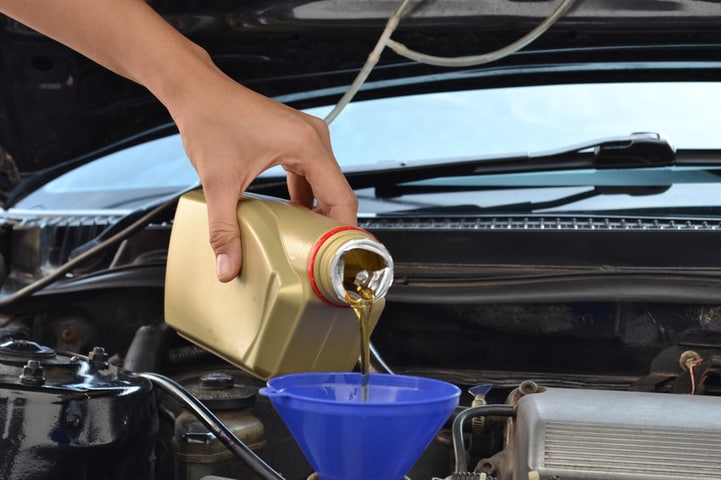Oil Change Schedule: How Often Should I Get My Oil Changed
Oil Change Schedule: How Often Should I Get My Oil Changed

Keeping your vehicle in top condition doesn’t have to be complicated. One of the simplest yet most important maintenance tasks is an oil change. While it might seem like a routine chore, regular oil changes can significantly extend the life of your car or truck. Choosing a trusted auto repair service like Lamb’s Tire and Automotive ensures you get quality work at competitive prices.
With modern advancements in engine technology and synthetic oils, the old rule of changing oil every 3,000 miles isn't always accurate. It's crucial to understand your vehicle’s specific needs and driving conditions. Here’s what you need to know about oil change schedules and how to keep your engine running smoothly.
Key Factors That Influence Oil Change Frequency
While many people follow the 3,000-mile or 3-month rule, several other factors can impact how often you should change your oil:
Vehicle Age
Newer vehicles are designed with more efficient engines that use oil better than older models. However, as cars age, their performance may decline, and oil may not last as long. Older engines may require more frequent oil changes to prevent sludge buildup and maintain performance. A professional engine flush can also help improve oil efficiency in aging vehicles.
Driving Conditions
Certain types of driving—known as “severe†conditions—can accelerate oil degradation. These include:
- Long trips at low speeds (under 50 mph)
- Towing heavy loads
- Driving on unpaved or dusty roads
If you frequently drive under these conditions, you may need oil changes twice as often as the standard recommendation.
Climate and Weather
Extreme temperatures can affect oil performance. In hot climates, oil can break down faster, while cold weather can thicken oil and reduce its effectiveness. If you live in an area with harsh weather, consider adjusting your oil change schedule accordingly.
Type of Oil Used
The type of oil you choose plays a big role in how often you need to change it. Conventional oil is more affordable but requires more frequent changes. Synthetic oil, although pricier upfront, lasts longer and provides better protection for your engine, especially in extreme conditions.
How to Check Your Oil Level
Checking your oil is a quick and easy way to monitor its condition. Most modern vehicles have an electronic oil level indicator, making it simple to check. For older cars, you’ll need to use the dipstick:
- Park your car on a flat surface and let it cool down.
- Locate the dipstick under the hood.
- Remove the dipstick, wipe it clean, and reinsert it.
- Check the oil level against the markings on the dipstick.
If the oil is below the minimum mark, it may be time for a change. Regular checks help ensure your engine stays well-lubricated and protected.
Why Choose Lamb’s Tire and Automotive?
When it comes to oil change services in Austin, TX, and surrounding areas, Lamb’s Tire and Automotive has been a trusted name since 1987. We combine expert knowledge with competitive pricing to deliver high-quality service. Whether you're looking for a quick oil change or a full maintenance checkup, we’re here to help you keep your vehicle running smoothly.
Don’t forget to check out our current oil change coupons to save even more on your next visit. Book your appointment today and experience the difference of reliable, professional auto care.
Frequently Asked Questions About Oil Changes
Why do I need an oil change?
Regular oil changes are essential for maintaining engine health. Over time, oil becomes contaminated with dirt and debris, reducing its ability to lubricate engine parts. This can lead to increased friction, overheating, and even engine failure. Changing your oil keeps your engine clean and running efficiently.
How often should I get an oil change?
Most experts recommend an oil change every 3,000 to 5,000 miles. However, this can vary depending on your vehicle, driving habits, and the type of oil used. Always refer to your owner’s manual for specific recommendations.
Do I need to replace the oil filter every time?
Yes, it's recommended to replace the oil filter with every oil change. The filter captures debris and contaminants, and if left unchanged, it can become clogged, reducing oil flow and potentially damaging your engine.
What are signs that I need an oil change?
- Rough or shaky engine performance
- Knocking sounds from the engine
- Excessive smoke from the exhaust
- Oil light illuminating on the dashboard
What should I do if my oil light comes on?
If your oil light turns on, first check your oil level using the dipstick. If the oil is low, add more. If it's dirty or low, an oil change is likely needed. Don’t ignore the warning—get it checked by a professional as soon as possible.
Do you offer oil change discounts?
Absolutely! Lamb’s Tire and Automotive offers special deals on oil changes to make maintenance more affordable without compromising quality. Check our website for current promotions and coupons.
What is preventive maintenance?
Preventive maintenance includes regular services such as oil changes, tire rotations, and brake inspections. These routine checks help prevent major issues and keep your vehicle in good working condition over time.
Is there a difference between conventional and synthetic oil?
Yes. Conventional oil is less expensive but requires more frequent changes. Synthetic oil offers better protection, lasts longer, and performs better in extreme temperatures. It’s ideal for high-performance engines or those driven in tough conditions.
Where are your locations?
Lamb’s Tire and Automotive has multiple locations across Austin and nearby areas. Find the one closest to you and enjoy convenient, high-quality automotive service.
Schedule An Oil Change Service Today
Entry Level Cornet,Entry Level Professional Cornet,Plastic Cornet,Colorful Cornet
ZhengOu Musical Instruments Co.,LTD , https://www.zomusical.com